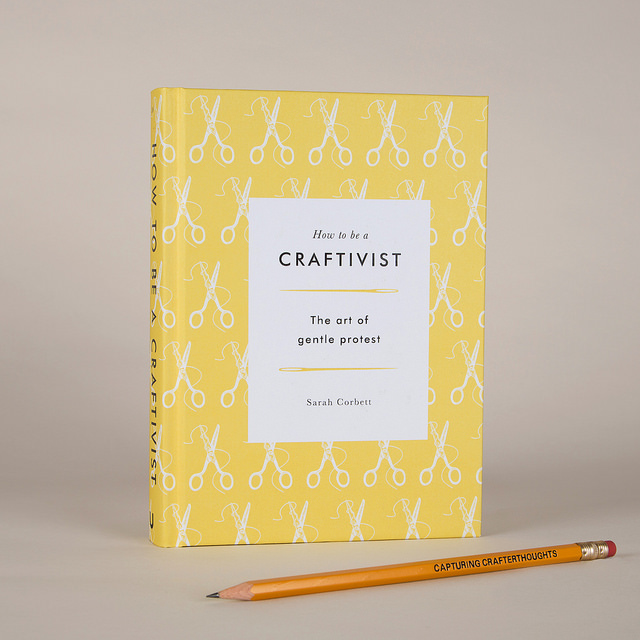Some dismiss craftivism as not ‘real’ campaigning. If that’s you, I’d challenge you to read ‘How to be a Craftivist‘ by Sarah Corbett, and see if you still hold the same view after reading it.
I’ve just finished Sarah’s book, which was crowd-funded by hundreds of individuals (including me and my wife), and explores what the art of gentle protest is.
I struggle to think of a single book that looks at an approach to campaigning with such rigor and reflection. I can’t recommend it highly enough, even if you’re someone who doesn’t feels comfortable with a needle and thread in your hand.
The book is in part a how-to handbook and in another part a call to a better form of campaigning. It’s brilliantly written, and a really wonderful, uplifting, inspiring and encouraging read. If only every branch of campaigning had someone who took the time to think deeply about their campaigning craft and share it with the rest of us.
As I’ve written before that I think that we dismiss craftivism not as ‘real campaigning’ at our peril, and that’s a view I’m even more sure about after reading ‘How to be a Craftivist’.
Having finished Sarah’s manifesto, I’ve also been reflecting if all campaigners could benefit from the following 5 traits of gentle protest, whatever your preferred form of activism;
Thoughtful – Craftivism isn’t simply about making something that looks ‘nice’ – although that’s helpful. As Sarah explores in the book it’s about really thinking about what will resonate most with the target that you’re looking to influence. I love the campaign that Sarah ran with Share Action to get Marks and Spencers to pay the Living Wage.
Each activist was given a member of the board to stitch fora and was encouraged to research the board member, and stitch a hankie that contains words, images, and ideas that would resonate with them. When they were delivered many of those they handed to them engaged in meaningful conversations. That thoughtfulness in connecting into what will engage with our ‘targets’ really resonated with me. How do we help those we’re looking to influence understand the commitment we have to our issue.
Slow – So much of our campaigning is about responding quickly but in the busyness of getting our latest email action out or responding with a clever tweet. Now the book isn’t suggesting that we should stop doing ‘fast activism’ for ‘slow activism’, but instead presents a challenge. That when so many of the issues that we’re working on are big, complex and complicated, we sometimes we need to slow down to go further. To find approaches that let us reflect on where we’ve come from, and where we’d like to go.
Communal – Craft might sound like a solo activity, but around the world, the Craftivist approach has been bringing groups together. Many who join would never consider getting involved in a campaigning activity, especially a march or a protest, it’s bringing people together, getting them to find community over the act of stitching and building connections to sustain activism. But beyond that, I found the story of organising her first protest outside Primark, which saw Sarah reflect if the protest had done more to build a divide rather than a bridge, and the challenge to organise protests that open people up to engage with our message a really inspiring one.
Graceful – As a campaigner, I’ve never been asked by my MP to stop sending them issues, but Sarah has. She writes in the book about her experience of lobbying her Conservative MP. She was sending their office so many emails they asked her to stop. Instead, she took to stitching a message on a hankie to them and asking for the opportunity to meet. That helped to open up a dialogue and conversation.
I don’t get the impression for the story that Sarah has started to vote for this MP, but in a world where it’s easy to see our opponents as our enemies, it a reminder of a more graceful and generous approach to our activism. Where we see those we’re seeking to persuade as those we have more in common with.
Mindful – I was struck throughout Sarah’s book that the approach to craftivism is a real sense of intentionality in the way in which you approaching design – from the color of material you choose to use to the messages you share. It’s a mindful intentionality that we could all learn from. But beyond the approach to design, it the constant message in Sarah’s book that you need to approach your campaigning with a mindfulness that reflects the decisions and choices you make about your campaigning.
How we could all benefit from the 'art of gentle protest'

This is wonderful message!
We are a movement in Knitting Peace in south Sweden one of our activities is to Knit and send away peacedoves with a letter!